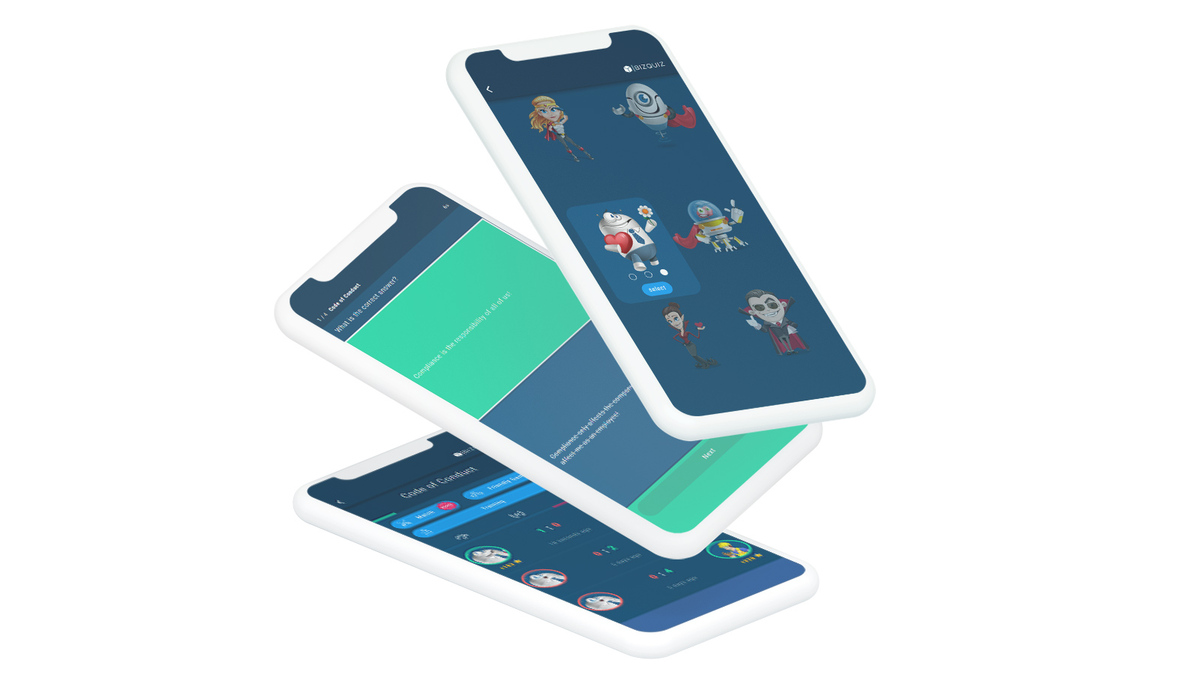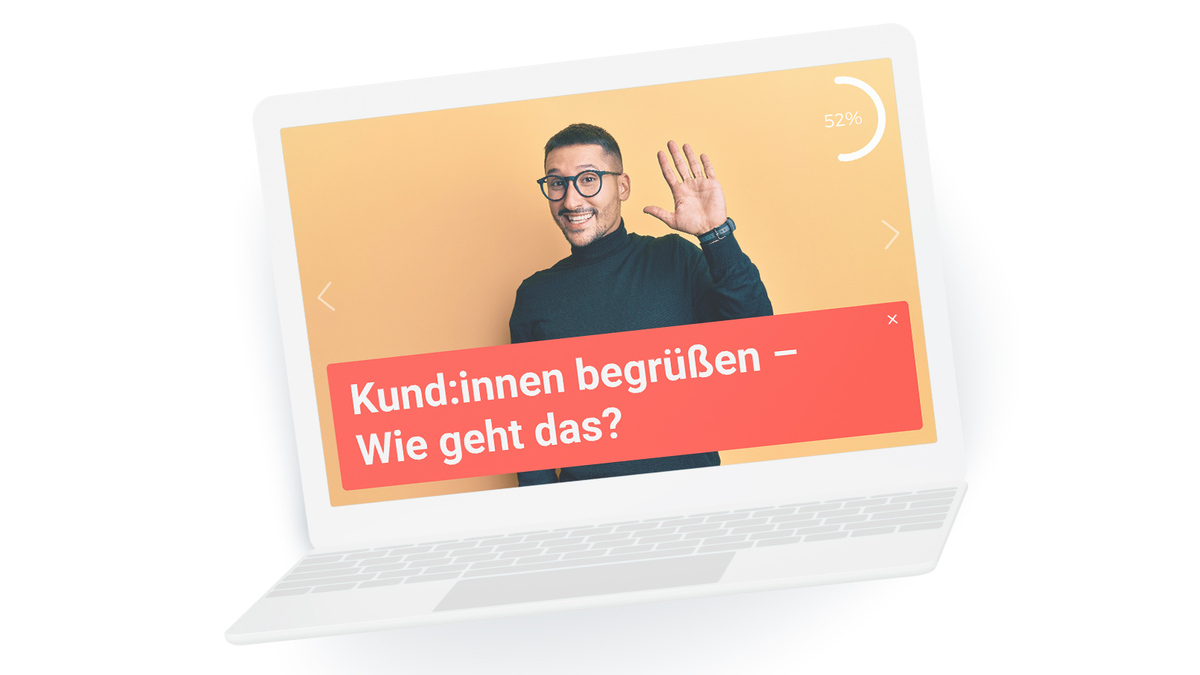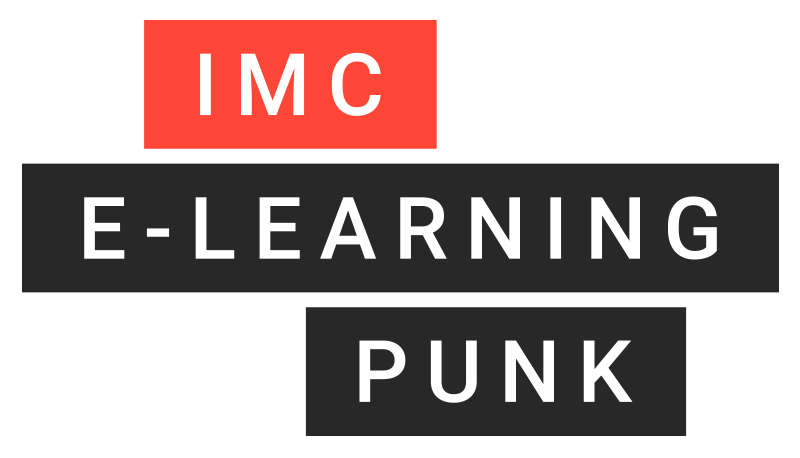
Diversity Has to Be Learned
Diversity in e-learning content
Corporate Learning is a Window into Your Organisation’s D&I Soul
Three golden rules for companies seeking to put diversity on their training agenda
Let’s say a company comes to us for help with incorporating diversity and inclusion (D&I) into the learning experience of its employees. Up until fairly recently, the first question we would ask would be, are you looking for training content that appeals to a diverse target audience, or training content that deals with the subject of diversity?
But things have changed over the past couple of years, as Philipp Schossau, Senior Instructional Designer here at imc, explains: “Making training courses diverse in terms of both content and visual appearance is now a standard requirement, irrespective of the subject matter. Diversity training, on the other hand, has its own special requirements – most notably a clear stance on the part of the client.”
Diversity in e-learning is clearly growing in importance. So, in this article, we have put together a summary of key recommendations for companies seeking to incorporate diversity into their learning experience.

All a matter of perspective? Tips for implementing diversity in training content
Prospective employees want to be able to see what a company’s position on D&I is, and how the company is championing the D&I cause. So, whatever the subject matter, company training courses should be diverse and gender-neutral in design. Here are three golden rules for making training courses diverse and inclusive:
Culturally diverse characters:
Whenever human personas or mentors feature in a training course they should reflect a certain degree of cultural diversity. If there are not enough personas to demonstrate sufficient diversity, then it is possible to use fictional characters – avatars – that have no particular cultural background.

imc Biz Quiz
Diverse gender identities:
Needless to say, learning content should aim to reflect and include all gender identities. It’s not enough to merely employ terms like “male”, “female”, and “gender-diverse”. The aim, rather, should also be to break down conventional gender roles and gender stereotypes. Our learning experts therefore always endeavour to keep their design concepts free of these outdated roles and clichés.

INFO:
We’re currently working on a diversity avatar creator. Before taking part in a training course, each user will be able to build an avatar that looks however they want it to, regardless of cultural background or gender role.
Gender-neutral language:
This often depends on the requirements articulated by the company in question. However, we strongly recommend the consistent use of inclusive language across all training content.

in German you can use "*" to create gender-neutral language

GOOD TO KNOW
Authoring tools like imc Express automatically offer a range of output options and simplify the process of creating diverse and inclusive training content. With imcExpress, this process is controlled in the background via AI.
Attitude is a prerequisite for special diversity trainings
The role that D&I management plays in a company is rooted in the corporate culture. This has a direct impact on a company's learning culture. Those who want to implement special diversity and inclusion training into the learning experience of their employees must have a clear stance on it. For this reason, companies should always be clear about the goal of a training before designing the content.
To sensitise the learning audience to diversity issues and communicate facts about D&I, we recommend scenario-based learning. Scenario-based learning uses real-life examples and situations. The closer the learning scenarios are to real-life situations, the more relatable the taught (behaviour) rules will be for the learners. Sensitisation can be further improved by using diverse personas to make learners aware of different or new perspectives.
Ready when you are
Things are changing, and organisations are already taking steps to make their training courses more diverse and to raise awareness of D&I. But many companies are still holding back for fear of doing something wrong. That’s why it’s critical to support D&I with effective corporate communication and drive genuine cultural change. In other words, when it comes to D&I, companies need to be bold and have courage of their convictions.

“The more global the company, the more likely that it’s already sensitised to diversity issues and will take the initiative and articulate diversity requirements for our projects,” said imc project management officer Kenneth Littlepage, Project Management Officer Business Consulting at imc in a previous interview on D&I. “Locally focused companies, on the other hand, tend not to be so sensitised, so it’s up to us to ask questions.”
However a company might choose to approach it, diversity is a topic that’s here to stay, especially for today’s younger generation. Warm fuzzy words in the corporate vision statement are all well and good, but they won’t carry much weight if the company is a monoculture of white men in suits or hides behind disclaimers to the effect that “the use of he and his is solely for ease of reading and refers to all genders equally”. If you want diverse people in your company, you actually have to make them feel included.
RELATED CONTENT

Rapid Content Development
We want things now: fast food, coffee to go, messenger services, online shopping … we no longer have time. Companies have also clocked onto this trend, and want to stay up to date with their training courses.

Gamification takes corporate learning to a new level
The fact that Game Based Learning works as a motivational booster for e-learning is already rooted in childhood. We have summarized the most common types of games and practical examples for you.

Contact person
I joined the imc newsroom team in 2021. As a journalist my heart beats for content and storytelling.
I’m excited to figure out how e-learing and digitization affect the future of work. My task is to create content to talk about and I’m always looking for trends.
Privately I love to travel and eat Tapas.
Topics: E-Learning Trends, Corporate Social Responsibility, Press and Influencer Relations
